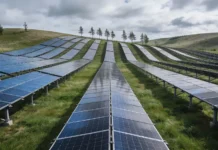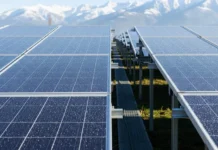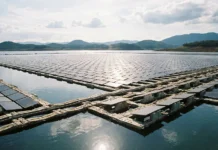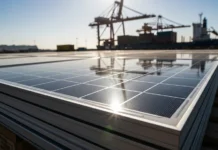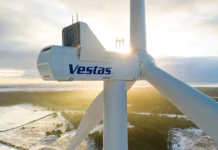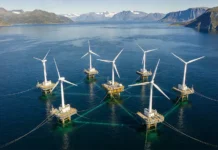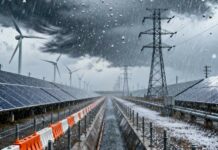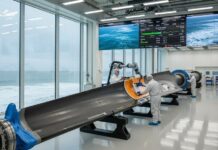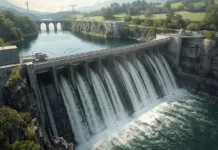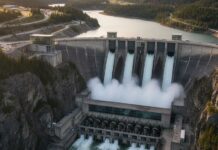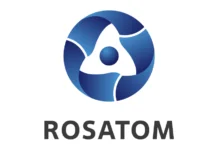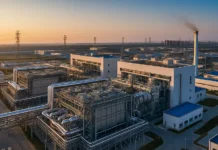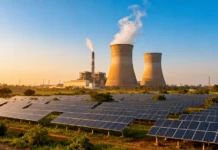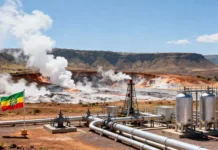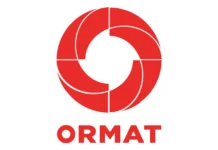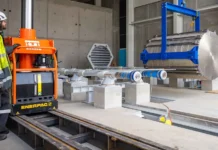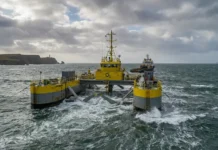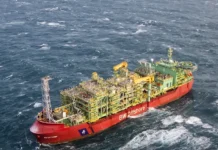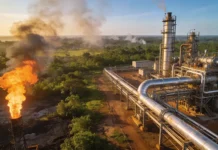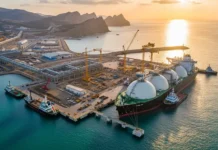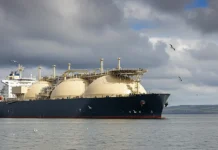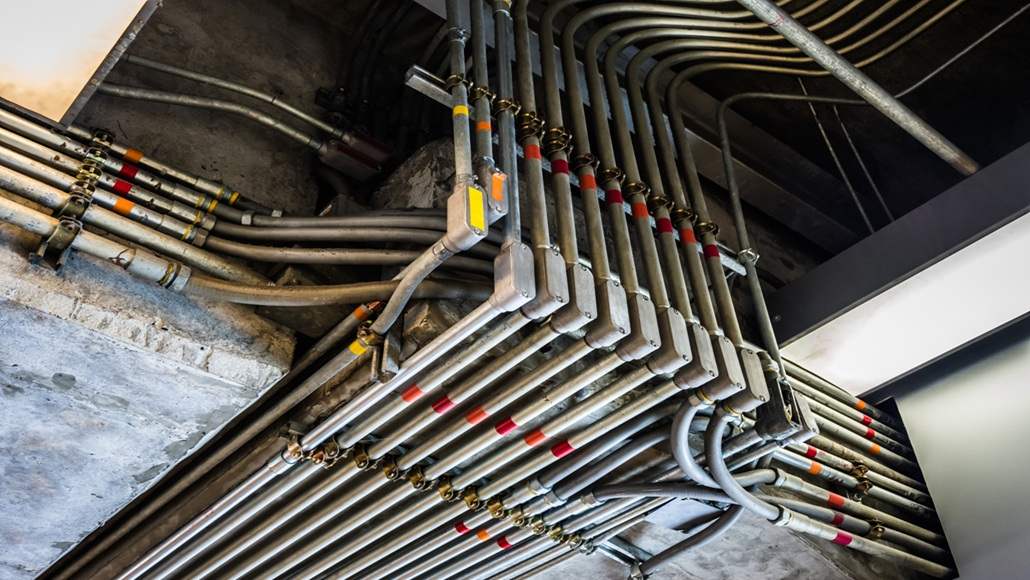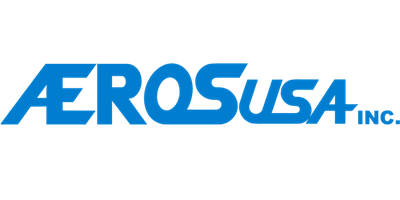Choosing the right conduit for high-temperature environments isn’t something you should take lightly. The correct conduit protects cables from heat, impact, dust and fluids while keeping installation efficient and long-lasting. From aerospace and defense to food processing and heavy industry, every sector has unique needs when it comes to conduit performance. By understanding the available materials, ratings and supplier strengths, you can make confident decisions that ensure safety, compliance and reliability in even the harshest conditions.
Understanding Temperature Classifications and Standards
Understanding temperature classifications is critical when selecting conduit for high-temperature environments. Manufacturers assign specific continuous operating and short-term temperature ratings to their products, often backed by testing to international standards. These ratings indicate the maximum heat a conduit can endure without degrading, melting or losing mechanical integrity.
For example, some conduits are rated for continuous use at 150 degrees Celsius, while others built from advanced fluoropolymers or stainless steel can handle much higher temperatures. Choosing a conduit that aligns with the actual thermal conditions of your application helps prevent premature failure and ensures consistent performance.
The standards and certifications that govern these products are equally important. International standards such as UL, IEC and MIL-spec provide benchmarks for flame resistance, impact resistance and durability in harsh conditions. Meeting these standards ensures compliance with regulatory requirements across industries like aerospace, automotive and rail. By understanding the temperature classifications and the governing standards, you can confidently match the right conduit to your application, knowing it’s been tested and proven for the environment in which it’ll operate.
5 Kinds of Conduits and Where to Get Them
When heat is a constant factor, your cables need more than basic protection. These companies specialize in conduit solutions designed to handle extreme temperatures while maintaining durability and performance.
1. AerosUSA: High-Performance Mechanical Protection
AerosUSA is a specialist distributor focused on wire-and-cable protection systems, and it represents several European manufacturers. If you need high-temperature convoluted tubing, braided sleeving or metal-jacketed flexible conduits for harsh industrial environments, AerosUSA is set up to supply those parts and the accessory system. This includes glands, fittings and EMI/RFI shielding that turn a raw length of tubing into a serviceable harness. The company positions itself as an aerospace, rail and heavy industry partner for those needing proven supplier pedigrees rather than generic commodity parts.
Its cable protection systems are designed for environments that require high flexibility without compromising durability. The conduits and fittings they provide are long-lasting and engineered to withstand tough conditions, including high-impact forces, flame exposure and environments where dust and water are concerns. With high sealing rate connectors, your wiring harnesses stay protected against contaminants, ensuring reliability over time. The materials are built with the newest technology, so you get proven solutions and forward-looking designs that match today’s industrial demands.
One of the biggest benefits is reduced labor time thanks to fast installation. Its systems are designed for easy handling and connection, meaning your team can install them quickly and efficiently, minimizing downtime. Its flexibility, immediate customer response, quick quote turnaround and fast delivery make AerosUSA a trusted partner when project timelines are tight.
Key Features:
- Flexible heating cords and heaters rated for very high operating temperatures.
- Fiberglass-sheathed heating cords with rapid thermal response.
- Insulating sleeves and jackets designed to pair with high-temp conduits.
- Integrated measurement and control options, including thermocouples and controllers.
- Good engineering support for matching heater and insulation specs to application needs.
2. Electri-Flex/Liquatite: Stainless and Jacketed Flexible Metallic Conduit
Electri-Flex (Liquatite) specializes in engineered flexible metallic conduit systems, focusing on stainless steel constructions and jacketed options. Its stainless steel flexible conduits and jacketed variants are targeted at applications that need corrosion resistance and high temperature tolerance, such as food processing, chemical plants and industrial machinery where sanitization or caustic cleaners are present. Electri-Flex’s range includes jacketed stainless steel conduit that maintains flexibility while delivering a higher temperature and abrasion capability than plain plastic looms.
What distinguishes Electri-Flex is the combination of core strength and optional outer jackets. You get the mechanical robustness of metal plus the benefits of food-grade or halogen-free outer coverings when required. If heat is paired with physical risk, like impact or long runs across moving equipment, stainless steel or jacketed metal flexible conduit is a pragmatic choice because it limits deformation and preserves shielding where grounding is required. Its product literature explicitly calls out extreme temperature compatibility and specialized grades for challenging environments.
Key Features:
- Fully stainless steel flexible conduit variants for corrosion and heat.
- Jacketed stainless flex for food-grade and low-smoke or halogen-free needs.
- Products rated for continuous flex and rugged mechanical abuse.
- Options that meet low fire hazard and industrial grade certifications.
- Good selection of fittings, connectors and egress hardware for metal conduit.
3. TE Connectivity: Raychem Convolex and HCTE High-Temperature Tubing
TE Connectivity’s Raychem line is widely used in aerospace and military harnessing where temperature, fluids and abrasion resistance matter. It offers convoluted tubing and a higher-temperature helical style specifically rated for elevated operating temperatures. Convolex types commonly cover roughly -55-150 degrees Celsius, while some HCTE materials are rated up to about 200 degrees Celsius. These products combine crush and abrasion resistance with flexibility — exactly the characteristics harness designers need when routing wiring through hot engine bays or near exhausts.
TE’s advantage is system thinking. Tubing mates with its heat-shrink parts, cable glands and installation tooling. You’ll find fluoropolymer and crosslinked materials that stand up to fuels, hydraulic fluids and solvents, so the tubing is thermally tolerant and chemically robust. If your priority is long-term reliability in regulated industries like aerospace or transportation, TE’s Raychem portfolio is a top place to start.
Key Features:
- Convolex convoluted tubing with good crush and abrasion protection.
- HCTE styles rated up to 200 degrees Celsius.
- Fluoropolymer and crosslinked polymer options for chemical resistance.
- Aerospace-grade approvals and compatibility with heat-shrink and harness components.
- Strong documentation and design support for regulated industries.
4. McMaster-Carr: Flexible Metal, Rigid Stainless, Liquid-Tight and Specialty Options
McMaster-Carr is a go-to industrial supplier for fast access to a wide set of conduit types. It stocks flexible metal conduits, liquid-tight flexible metal conduits, spiral plastic conduits, rigid stainless conduits and many specialty covers and adapters. Its strength is breadth and immediate availability. You can often buy short lengths, fittings or custom cut pieces on the same day, which is handy when a service call or retrofit can’t wait.
For high-temperature contexts, McMaster carries rigid stainless conduit and metal flexible conduit grades intended for food, chemical and heat-exposed environments. It also offers liquid-tight stainless and plastic options for areas that need washdown resistance plus thermal tolerance. If you’re prototyping or need to mix and match conduits, McMaster’s fast-search catalog and comprehensive size and fitting cross-references make specifying and ordering much faster than dealing with multiple OEMs.
Key Features:
- Large selection of products.
- Off-the-shelf short runs, fittings, connectors and adapters.
- Food-grade and wash-down friendly conduit choices for high-temperature processing lines.
- Rapid procurement and clear size and part cross-references.
- Good technical notes and charts to help pick materials for temperature and corrosion exposures.
5. Omega Engineering: High-Temperature Flexible Heating Cables, Sleeves and Specialty Protection
Omega Engineering is best known for sensors and thermal products, but they also sell flexible heaters, heating cords and high-temp insulating sleeves that are essential when you need to manage conductor temperatures or protect harnesses from radiant heat. Its flexible heating elements and fiberglass-sheathed heating cords can operate at very high temperatures, making them useful when conduit alone won’t solve a thermal problem and you need controlled heating or insulation in a compact form.
In lab, process and industrial OEM settings, these solutions are frequently paired with high-temp conduit and insulation to create a complete thermal and mechanical protection system.Omega’s practical advantage is combining thermal hardware with measurement and control. You can buy the heater, insulating sleeve and thermocouple or controller that keeps temperatures in spec.
That system approach reduces integration risk. If your challenge is not just surviving ambient heat but stabilizing temperatures across a harness, Omega’s product family is one of the most useful places to source engineered heating and protection components.
Key Features:
- Flexible heating cords and heaters rated for very high operating temperatures.
- Fiberglass-sheathed heating cords with rapid thermal response.
- Insulating sleeves and jackets designed to pair with high-temp conduits.
- Integrated measurement and control options, like thermocouples and controllers.
Good engineering support for matching heater and insulation specs to application needs.
| Company | Protection Offered | Typical Temp Ratings | Key Strengths | Best For |
| AerosUSA | Convoluted tubing, braided sleeving, metal-jacketed flexible conduit, EMI/RFI-shielded options | Up to 200 degrees Celsius on material | High flexibility, flame resistance, high sealing rate connectors, immediate response, quick turnaround | Aerospace, rail, heavy industry needing certified traceable solutions |
| Electri-Flex (Liquatite) | Stainless steel flexible conduit, jacketed stainless conduit, liquid-tight metallic variants | Continuous high-temp service | Corrosion resistance, mechanical durability, flame resistance, washdown suitability | Food processing, chemical plants, industrial machinery |
| TE Connectivity | Convolex convoluted tubing, HCTE helical high-temp tubing | -55-150 degrees Celsius for Convolex and up to 200 degrees Celsius for HCTE and fluoropolymer options | Aerospace-grade approvals, chemical resistance, integration with heat-shrink and harness components | Aerospace, defense, transportation harnesses requiring chemical and heat protection |
| McMaster-Carr | Flexible metal conduit, liquid-tight conduit, rigid stainless conduit, spiral plastic options | Stainless and flexible metal conduit typically up to 200 degrees Celsius | Huge inventory, immediate availability, broad material selection, easy ordering | Prototyping, maintenance, urgent replacements, multi-material sourcing |
| Omega Engineering | Flexible heating cords, fiberglass-sheathed insulation sleeves, specialty thermal protection | Many cords and sleeves rated several hundred degrees Celsius | Thermal control and conduit pairing, integrated sensors and controllers, high-temp insulating materials | Lab, process and OEM settings where heat must be managed and stabilized |
How Do I Choose the Right Conduit for High-Temperature Environments?
Not just any conduit will do when you’re dealing with heat. Selecting the right one means looking closely at materials, ratings and real-world demands, not just cost. Here are some tips for choosing the right conduit for high-temperature environments.
Look at the Material First
It’s crucial to consider the material composition. For instance, stainless steel performs well under extreme heat and mechanical stress, while fluoropolymer or fiberglass-based conduits resist chemical attack alongside heat. Each material has strengths and trade-offs, so knowing whether you need strength, chemical resistance or flexibility helps narrow your choice.
Check Temperature Ratings, Not Just Marketing Claims
It’s easy to get distracted by brand promises, but temperature ratings are what count. A conduit may advertise “high-temp” performance but only be safe up to 150 degrees Celsius, while your system requires tolerance above 200 degrees Celsius. Always look at the datasheet for continuous operating ranges and short-term limits. This ensures you don’t pick a conduit that fails early.
Consider the Installation Environment
Choosing the right conduit for high-temperature environments means considering where it’ll live. A conduit running across a moving piece of equipment might need flexibility and impact resistance, while one near chemical lines must withstand aggressive fluids. Matching conduit features to the exact environment makes your choice safer and more cost-effective.
Factor in Selling and Protection Needs
High sealing rate connectors can be just as important as the conduit itself. If dust, water or oils are present, then liquid-tight or flame-resistant conduit with IP-rated connectors is worth the investment. This prevents failures caused by infiltration and protects sensitive wiring for the long term.
Think About Ease of Installation and Maintenance
Fast installation reduces labor costs and downtime. Flexible, easy to cut and simple to connect conduits save time during setup and future maintenance. If your team can install quickly without specialized tools, you’ve made a smart choice.
Match to Your Industry Standards
Each industry has different compliance needs. Aerospace requires flame resistance and traceability, food processing demands stainless and washdown-safe designs, while rail systems prioritize vibration and impact resistance. By aligning conduit specifications with industry standards, you avoid costly redesigns and compliance issues later.
Making the Right Choice
Choosing the right conduit for high-temperature environments comes down to matching materials and ratings with the realities of your applications. Whether you need flexibility and fast turnaround or thermal solutions, there’s a supplier built for your needs. The key is to evaluate temperature tolerance as well as factors like sealing, impact resistance, compliance and installation speed. With a clear understanding of your environment and the right partner, your conduit system will deliver dependable performance for years.


